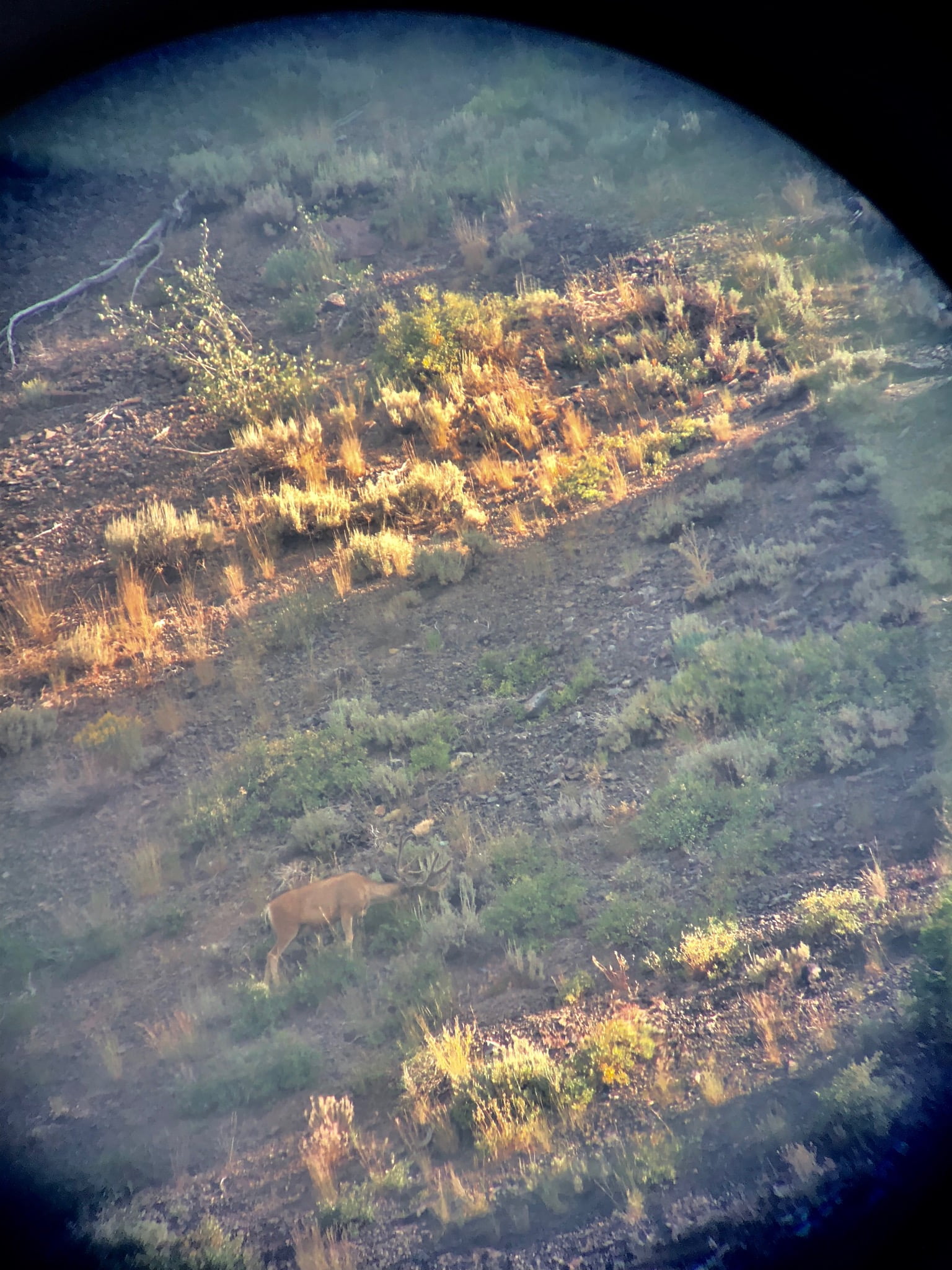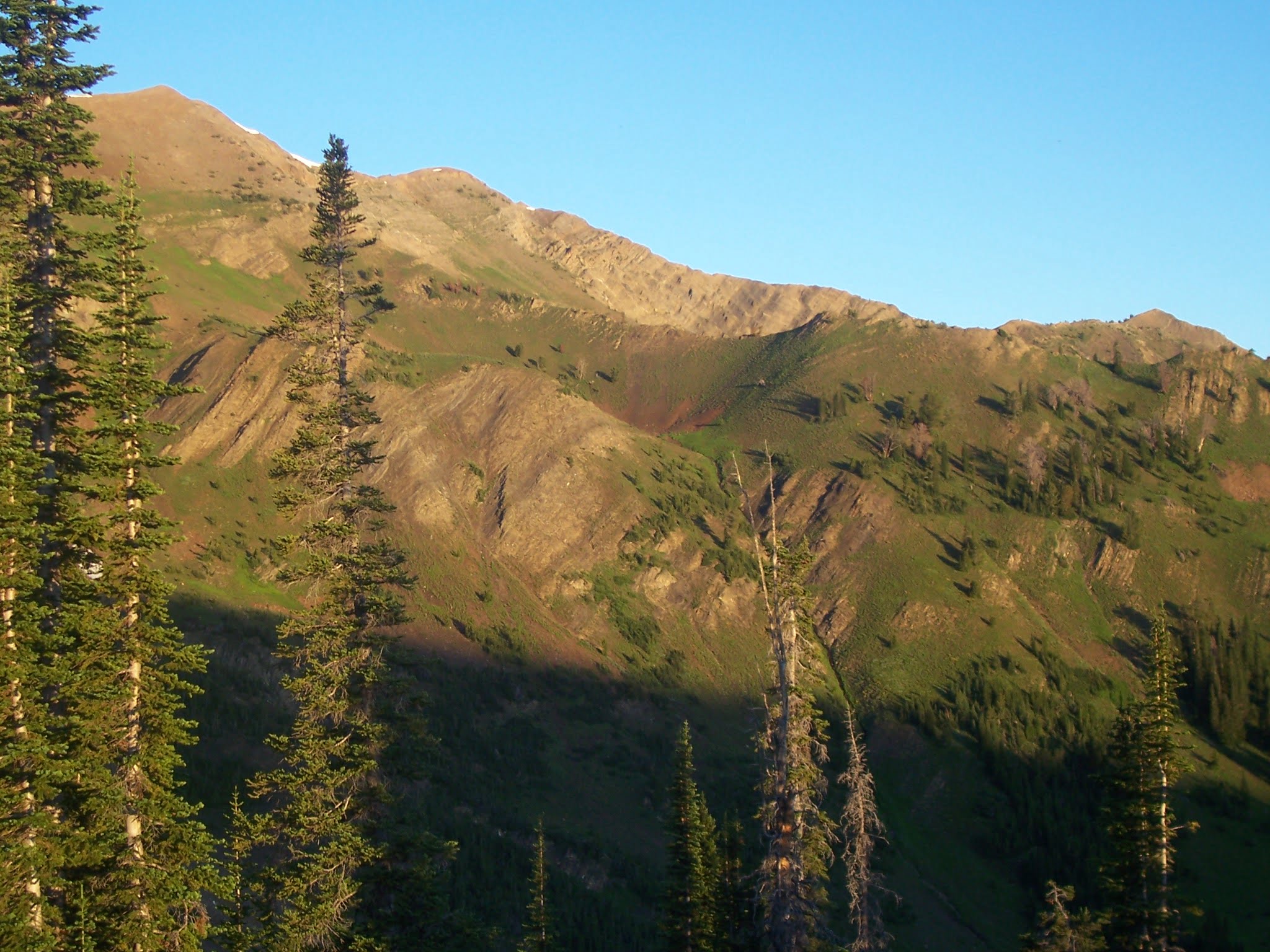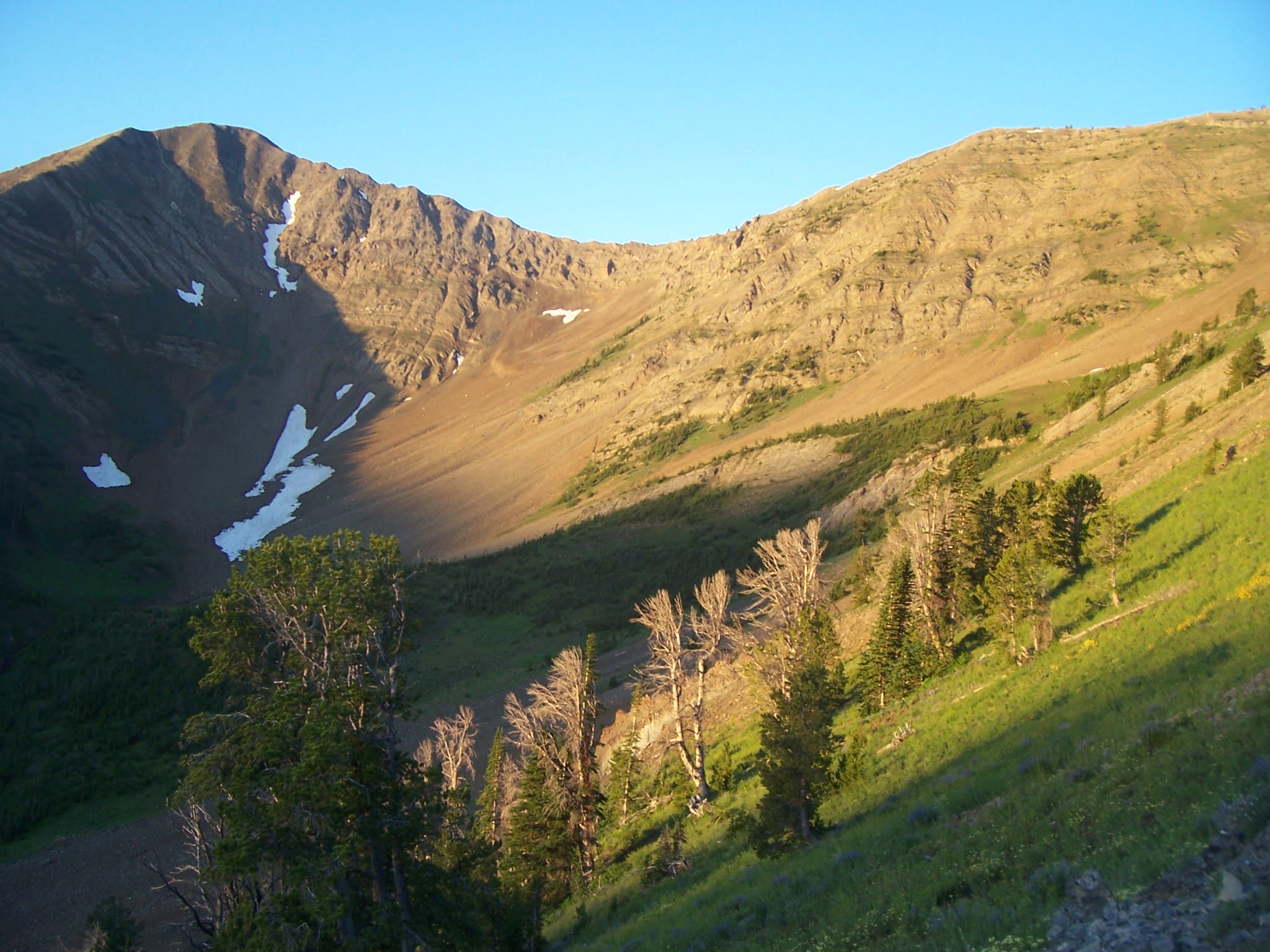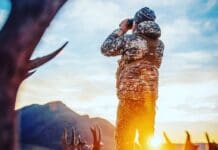
One of the most overlooked times to scout for big game is the early season; mid-to-late June through early-to-mid July. I get a sense the majority of hunters believe that the closer you scout to the season, the better. Also, I have heard many say that anything before mid-July and you can’t tell how big a buck or bull will be. I’d venture to say the majority of hunters who get the opportunity to scout an area preseason would allocate their time from late July on. I’m not saying this line of thinking is wrong. I am saying though many hunters who overlook these earlier times are missing out on a great opportunity.
Early Advantages
Now, if you already know an area very well and pretty much know where you are going to find the animals, and/or are looking for a specific buck or bull that you want to know will make book, early season scouting may be less helpful. For those who draw a tag in an area, they may not know very well or just going to a relatively new area, I’d venture to say this is the best time to scout in order to get to know the country. Early season scouting is more or less applicable depending on the country. For instance, many high-country basins are still buried in snow, and the deer in some of those basins are going to be in the early-season mode until late July.
Why scout early season?
I scout a lot each year from early as possible up through the seasons. I have found this early time frame to be the most productive time to spot animals easily. Also, I find antler growth to be far enough along to know that you are or aren’t looking at a big-antlered animal; maybe not to the point you can score him, but the biggest buck you see will usually be the biggest buck a month later.
In many areas, I find the difference in which the ease of finding animals in comparison to scouting later is enormous. I often find that the animals are out feeding more routinely for longer. I believe this is because the habitat is reaching its peak productiveness in this time frame, which often coincides with animals still trying to gain what they lost during the winter and growing the majority of their antlers, which takes a lot of nutrition.

Animals Can Be Easier To Spot
I also find that in a lot of country the terrain is still very green, and the redder darker coats pop in contrast. Often, I can cover a lot of country quickly and pick up a majority of animals very quickly during prime glassing times, which seems to last longer both mornings and evenings than later in the summer when it’s typically hotter. I have found that I can, to a degree, both eliminate and confirm which places hold and don’t hold animals fairly accurately.
I’d say roughly 70 percent of my best days spotting bucks or bulls scouting has taken place during this early time frame, often while I was scouting a somewhat new area or sub-area. Pretty much all these spots I have found are in the bag to a degree as they remain top spots in my arsenal of best places to find the animals in summer or in season.
Some Field Examples
Several years ago, after I had moved to a new area that limited opportunity for mule deer, I started scouting a bunch of country looking for mule deer in a huntable location. I remember the date well–June 20th. Right after work, I hit a new section of canyon country; I had seen whitetail and very few mule deer in the adjacent country, but this country had just a bit different aspect in habitat. Between that evening and the next morning before work, I saw over 60 bucks and found a few good bucks; one was in a group of nine bucks and stood out as the one I was going to pursue.

I scouted other areas the next couple of weeks, finding good pockets, but that was the one I planned to hunt. I decided to wait until late July to check on him again and see how big he was going to be. When I started scouting the area again, deer where not near as visible, and I didn’t see him, so I covered a lot of country seeing bucks but far less than my first scouting trips, and mainly only in the first and last hour of light.
Relocating The Buck
I decided a few days later to go to an opposite ridge and glass into the country where I had seen the buck. Early one morning, I saw the eight bucks he was with in June. I knew it was the same group because there was a buck with a distinct drop tine. I never saw that buck during the morning, however I found him just emerging at last light, not 300 yards from where I saw him in June.

Over the next couple weeks, I found him every time I looked. He would rotate between four different draws and wouldn’t come out until very last light with a couple of exceptions. When searching for him, I would be picking everything apart, and when I would finally see him, he’d be barley stepping out from a scrub. My point is I would have never found him had I not known exactly where to look and had I not scouted the area in June. I would have never known that hot pocket existed. I never did get the buck with several close calls during the archery season. Someone who drew a November rifle season tag took him; he ended up grossing 194 typical.
Bucks In The Open Longer
Over the years, I have found and do believe big bucks are easier to find in this period not only because of the circumstances listed but because they are less wary. As the novelty of the fresh buffet goes away, the big-buck instincts start to kick in, and they expose themselves less and less.
In another instance, I started working in a new area following a brutal winter in where as much as 70% of the mule deer didn’t make it, and most of the whitetail died in the wet Spring following from EHD. I didn’t start until late July. The first chance I got, I started scouting. I found it bleak. While I found a few decent bucks, everything was very discouraging.
The next year, in early June, I was out scouting before and after work. I found deer much easier to spot in the cut-up landscape; however, everything was in pockets. Leaving most of the country gameless. I scouted some of the same spots I had the prior late summer and ended up finding a pocket that was an absolute goldmine with over 35 bucks in one morning. 24 of them were 4×4 or bigger, including a few really good bucks. That size buck indicates at least a two-year old deer and more likely three, so I know they were around the previous summer.
I went back a month later and had a hard time finding the bucks, but being I knew where to look, I was able to find them. It was way harder, almost like looking for a needle in a haystack. It took several trips to locate some of the best bucks who happened to be basically in the same spots when I found them all one morning in early June.
Later Summer Days
In late July and August, I still have great days, there just seems to be less consistency. Some of the best spots I have I almost gave up on initial scouting trips. I may have passed many more great places due to poor initial scouting trips. Some of the ones I re-scouted it could have been the country looked too good not to try again, or I saw a lot of sign that brought me back. I’ve found some spots where I scouted during this timeline and didn’t see much whatsoever and then go back a couple of weeks later and hit the jackpot.
Conversely, I’ve had great days, then I go back and get skunked looking at the exact same country. There are many reasons why such as hot weather and moon phase. Fires are more likely later in the summer and let me tell you, especially if you are in long-range glassing country; smoke can ruin a scouting trip. I’ve had much-anticipated scouting trips ruined by hot weather in places that I was excited about and came away with more questions than answers.
Sometimes after you get beat up by an area and don’t see much, it can be hard to want to go back to that area again. The area could be every bit as good as you hoped or not. With that being said, the closer you are to the season you are going to be hunting when you find an animal, the better, but my point is that I find this later period to generally be less consistent.
How to Scout Early
Of course, there is a better chance you will hit snowdrifts on the way to an area, so check with the the land manager about access for the area you plan on scouting. Sucks pretty bad to take a long trip only to find you can’t make it to the area. In some country, animals are not even entirely to their summer range at this point. Often a lot of elk, especially the cows, can still be on caving grounds early during this period, which may or not be close to their summer range. I find bulls to usually be pretty close to the summer range by mid-to-late June. Mule deer bucks I find to be most consistently closest to where they will be when most hunting seasons take place, and the same with whitetail, as long as it’s not extremely high elevation with mostly snow.
When planning my scouting trips, I usually plan the early trips for the country I know the least. Also, when multiple areas are in play, I would lean for areas that dry out quicker; once you lose the green backdrop, animals get a lot harder to pick up. I also pick areas that are harder to find animals in if they are not out feeding, such as mid-elevation brushy country.

When planning a trip during this period, I pre-plan my routes as much as possible. My goal is to cover country, basically phase two scouting from my scouting article.
The animals should be relatively easy to spot, and enough of them should be out feeding that you don’t have to pick the country apart to find a good percentage of them. So, I try to hit as many spots as I reasonably can during an evening or morning. I have found that if I sit and pick apart one area really well during this time I do pick up more hidden animals, but I often find far less overall than if I glass faster and cover more ground provided the route is streamlined.
Be Efficient
I’m not hiking or driving through a bunch of un-glassable country during prime time. This includes trophy animals, which I believe this is the period of time they are least cautious during the summer, probably being caught up in the novelty of all the fresh groceries, but once they reach their fill, their wariness starts to win over. Robby Denning told me once that he thinks that with a massive influx of newborn calves and fawns in June, that predators have their fill for a few weeks and are less aggressive to the adults. I’d agree with that thinking.
Once we get later in the summer, I often find that the reverse is true. Covering ground too quickly and not picking the terrain apart can almost be fruitless. Honestly, it’s a feeling some mornings and evenings the game is just out, allowing you to cover more ground and still see a good percentage, and some you won’t see hardly anything if you don’t pick it apart. I’m just looking for pockets of game at this point, and if I go back later to scout or hunt, I will get more in-depth in the best pockets.
My Point
I’m not saying early scouting is better than scouting later. I spend most of my time scouting for clients from mid-July into September. It’s just that few weeks in June and early July are in my opinion an overlooked scouting period that offers us an excellent opportunity to find out what the country holds and where the animals are. In many cases, you can cover more country effectively, allowing you to focus your hunting on the more productive areas. Scouting during this time has a way of revealing game pockets that otherwise may take years to uncover.
Again, I believe scouting during this period is more effective for those in the early stages of getting to know an area versus those who already know their area well. As we close in on the beginning of summer, I’m already chomping at the bit to get out and start finding some trophy animals. Hopefully you are too after reading this article
You can comment on this article or ask Jim questions here.
Check out the early season scouting podcast with Jim Carr and Jordan Budd here.
You may also like these other helpful articles;






















